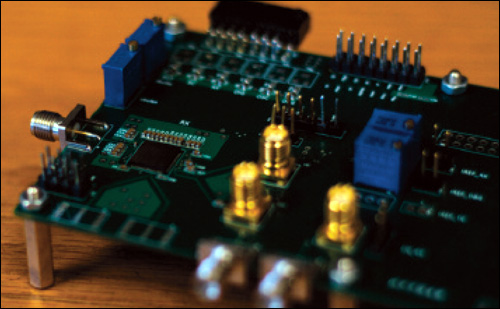The Deepwater Horizon disaster, which released an estimated 210 million gallons of oil into the Gulf of Mexico, focused the attention of oil companies, environmentalists and government agencies on the need to respond more effectively to spills. With increased drilling and shipping in the Arctic, questions have been raised about how the world can respond to a spill that could occur under several feet of ice. The answer might be a combination of acoustic devices and satellite RFID tags.
Last September, the Bureau of Safety and Environmental Enforcement (BSEE), part of the U.S. Department of the Interior, issued a contract worth nearly $900,000 to URS—a leading provider of engineering, construction and technical services for public agencies and private-sector companies worldwide—for the development of a system to track spills below ice floes.

The problem with tracking under-ice spills is that ice floes move with water currents, so even if a spill is detected and its GPS coordinates are noted, the spill could be miles away before the cleanup equipment reaches the spot. The solution must be able to mark the location of the spill and track it as it moves.
URS, which was recently acquired by AECOM, a large infrastructure and support firm, hired Midstream Technology, an RFID solutions development firm, as a subcontractor. Midstream’s director, Sam McClintock, has been working with researchers at the College of William & Mary and Evigia Systems, an active RFID and mesh networking technology company, to develop a system that leverages both acoustic technology and RFID to track spills in the Arctic.
When a submersible, manned or unmanned, locates an under-ice spill, it will release an acoustic device in a buoyant carrier slightly larger than a softball. The ball will lodge in the ice floe and emit a low-frequency sound wave that will travel horizontally through the ice (radio waves don’t travel well through ice).
After the acoustic device has been deployed, cleanup crews can return to the approximate location of the spill by plane and drop RFID satellite tags on the surface. The tags will pick up the acoustic waves traveling through the floe and compute the relative location of the device. The satellite tags on the surface, which McClintock describes as “lawn darts with something the size of a Coke can on top to house the satellite transmitter,” will broadcast their location, enabling the cleanup crews to find the spill, drill a hole in the ice and vacuum up the oil.
William & Mary and Midstream are developing the acoustic device. Envigia is developing the satellite tag, and URS is managing the project.
“The challenge right now is to see how far we can get the sound wave to propagate within the ice,” McClintock says. “But we think we will be able to have the tags pick up the sound waves from about a kilometer away, because they’ll have some computing power that lets them sift through background noise. Another challenge is developing a tag that sheds water, ice and snow so it can communicate properly with a satellite.”
The project is due to be completed by September, but McClintock is hoping for an extension. “We’d like to go up to the Arctic and test the solution under real-world conditions,” he says. “Of course, the spill will be simulated.”

